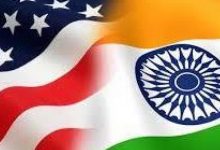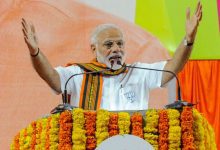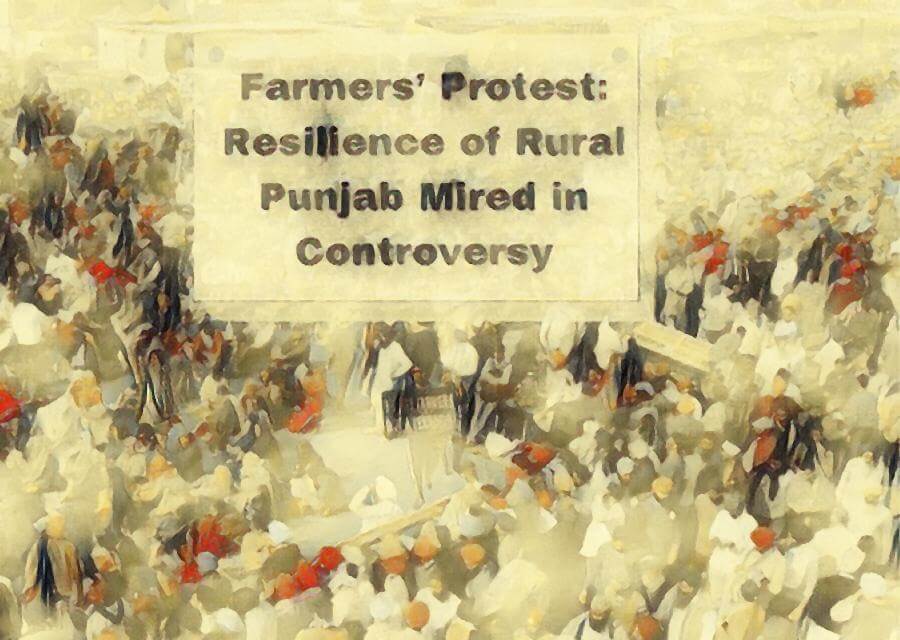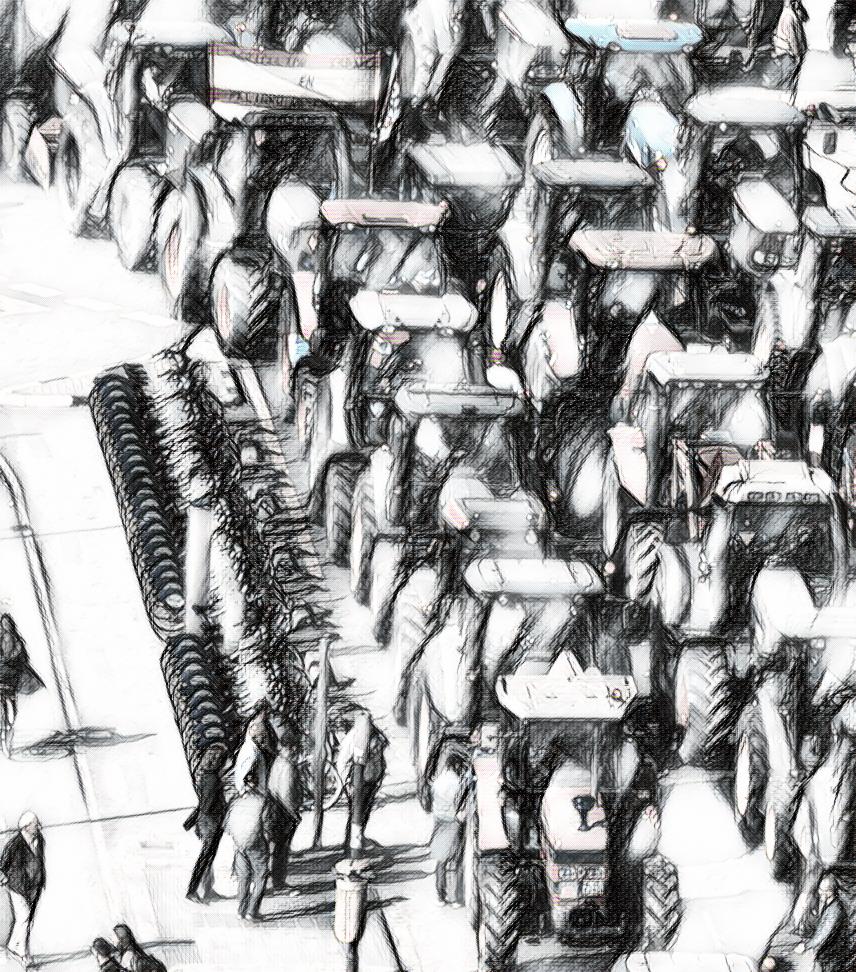Diversification of agriculture has lately necessitated and largely driven by evolving demographics, urbanisation, and changing demand patterns in the country, rather than effected by policy initiatives of the government. It is more likely to create distortions in the production of staple food – such as rice and wheat – a shortfall of which may create havoc among the people. A report, for Different Truths.
The ambitious reform agenda under implementation since 2014 in India, if carried forward without modification, may push the country into great trouble. The country is going to be the world’s most populous country within ten years, and by 2050 even China’s population will be only around 65 per cent of the population of India. Demand for food is to rise sharply putting great pressure on agriculture and food supply of the country. This stark reality cannot be allowed to terrorise the people of the country, but it should not be allowed to veil under the deceptive data of ‘fastest growing economy’, ‘doubling the farmers’ income’, et al.
It is true that some changes in the agriculture and food policy of the country has been effected during the last four years under the Modi government, but they remained cosmetic in nature against the enormity of the requirement. With the sustained improved access to inputs such as fertilizers and seeds, as well as better irrigation and credit coverage, agriculture production has been increasing on an average at about 3.6 percent annually, since 2011. But it is far below the decadal population growth rate of 17.64 percent. It is an alarming situation.
Diversification of agriculture has lately necessitated and largely driven by evolving demographics, urbanisation, and changing demand patterns in the country, rather than effected by policy initiatives of the government. It is more likely to create distortions in the production of staple food – such as rice and wheat – a shortfall of which may create havoc among the people. People are diversifying mindlessly from grains towards pulses, fruit, vegetables and livestock products. There should be balance somewhere in the productions chain. We also need more and more rice and pulses to feed our people, as well as other agricultural produce. It is here the good governance is needed to push growth in production of all crops and food items, and should not allow a pattern of lopsided growth at the cost of grain production.
During the last four years nothing has been done equivalent to Green Revolution of the sixties and seventies of the last century which led India to self-sufficiency in food grains at national level. In the next step we were to ensure food self-sufficiency at the household level, the dream that is yet to be realized. But the Modi government has no time for that on account of their being busy only in tall talks. As a result, the challenges in the agriculture and food sector remains at the worst level, and we are not left with much time to address them successfully before we come face to face with the spectre of food insecurity in near future.
The major challenges we are facing today are the prevalence of very large numbers of smallholders, low productivity, climate change, pressure on natural resources such as water, persistent food insecurity, and an under-developed food processing and retain sector. Among these challenges, the climate change has emerged as the most dangerous element which may effect a reduction of 15 percent in agriculture production in the country. The government knows this but is too slow in planning and implementation of the effective measures to handle the challenge.
It is worth mentioning that the agricultural policies in the country are designed and implemented by a complex system of institutions. The primary responsibility for many aspects of agriculture lies constitutionally on the state governments, most of them are presently not well off in terms of finance. The lack of fund, along with the lack of political will, prevents them from implementing even the urgent policies and programmes potentially effective for agriculture and allied activities. Here, the Centre has an important role to play by developing national approaches to policy and providing the necessary funds for implementation at the state level, in which the failure of the Union Government is clearly manifested in the food insecurity, nearly total dependence on rainwater, shortfall of food articles, distress of the farmers and their suicides, and the pathetic condition of the agricultural labours.
Moreover, there is no sufficiently strong mechanism to bring state and central level policy-makers together to discuss problems, design solutions, and monitor performance, as it is rightly said in the latest OECD report on the Agriculture Policies in India, 2018. At the central level, while the Ministry of Agriculture and Farmers’ Welfare has responsibility for agriculture policy, many other ministries and agencies have important roles. It put the country under a significant risk of fragmentation, overlapping, and unclear attribution of responsibilities.
To catch the bull by its horn was the need, but throughout the decades our governments did only the things that were politically needed, but not the things that were needed as per the requirement of the agriculture sector. It led to such agriculture policies that have sought to achieve only food security. That is our struggle with the food insecurity, which governments preferred to say euphemistically and politically the ‘initiatives for food self-sufficiency’. They only sought to ensure only remunerative prices to producers and safeguarding the interest of consumers by making supplies available at affordable prices. The mechanism of MSP has politically been exploited, even by this government to appease all the farmers as vote banks, but actually covering only 6 per cent of the farmers through it. The mechanism under the provisions of the Food Security Act is still under-developed and are unable to provide food articles to all at affordable prices.
It is disheartening to know that the level of support to producers, as measured by the share of transfers from consumers and taxpayers in gross farm revenues, averaged -6.2 percent during 2014-16. It is composed of budgetary spending corresponding to 6.9 percent of gross farm receipts and negative market price support of -13.1 percent of gross receipts. They together generate a negative producer support estimate (PSE), which needs careful interpretation. The negative price support has been continuing for many years and for many commodities.
This implies that domestic producers were implicitly taxed, says the OECD agriculture and food policy review of 2018, which is partly policy-induced, and partly related to other inefficiencies in the marketing chain. Policy induced inefficiencies are due to MSP being set below international prices for several commodities, domestic regulations, and trade policy measures. These also add to the uncertainties in the supply chain driving up transaction costs.
Virtually all of the budgetary transfers to agricultural producers in India are subsidies for variable input use, with overwhelmingly subsidized fertilizers, electricity, and irrigation water. Public expenditure financing general services has actually declined over the last decades resulting in poor development and maintenance of infrastructure, particularly hydrological, followed by the cost of public stockholding and expenditure on the agricultural knowledge and innovative systems.
Gyan Pathak
©IPA Service
Photo from the Internet







